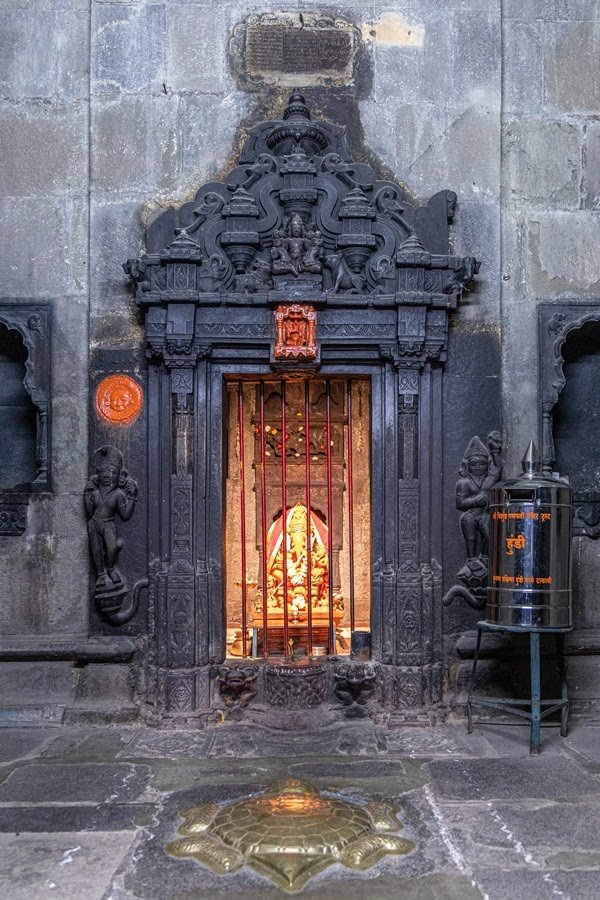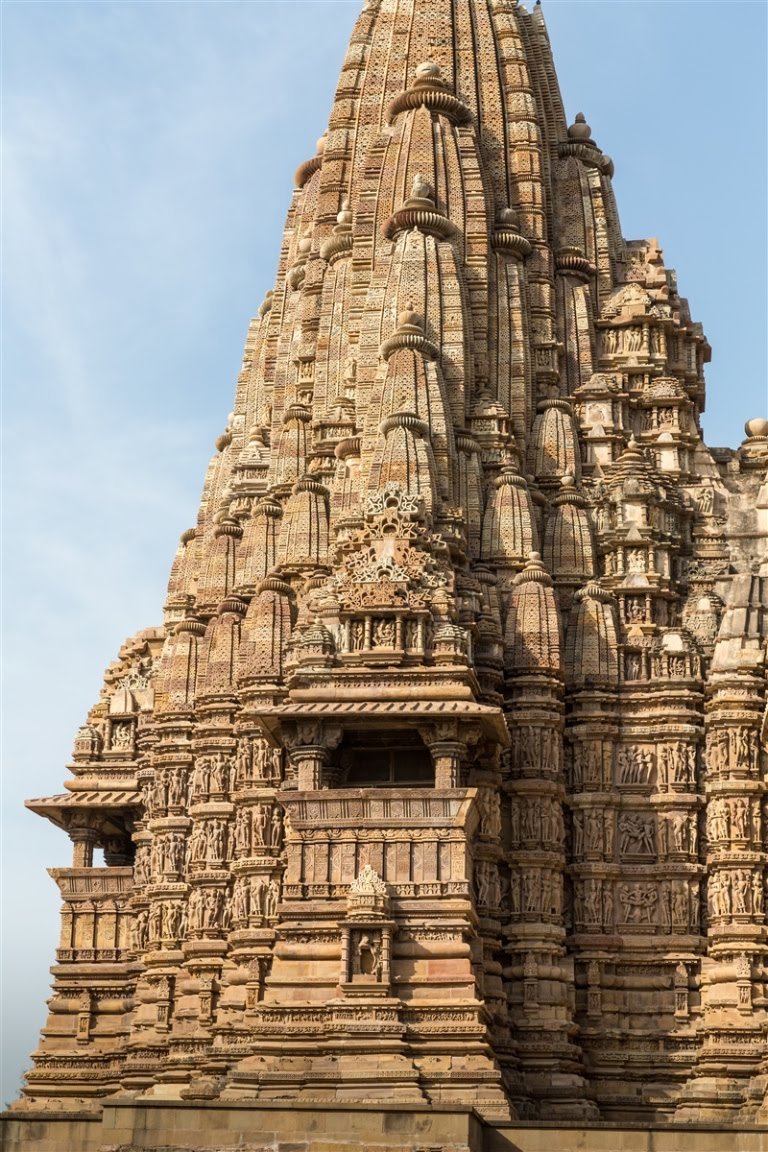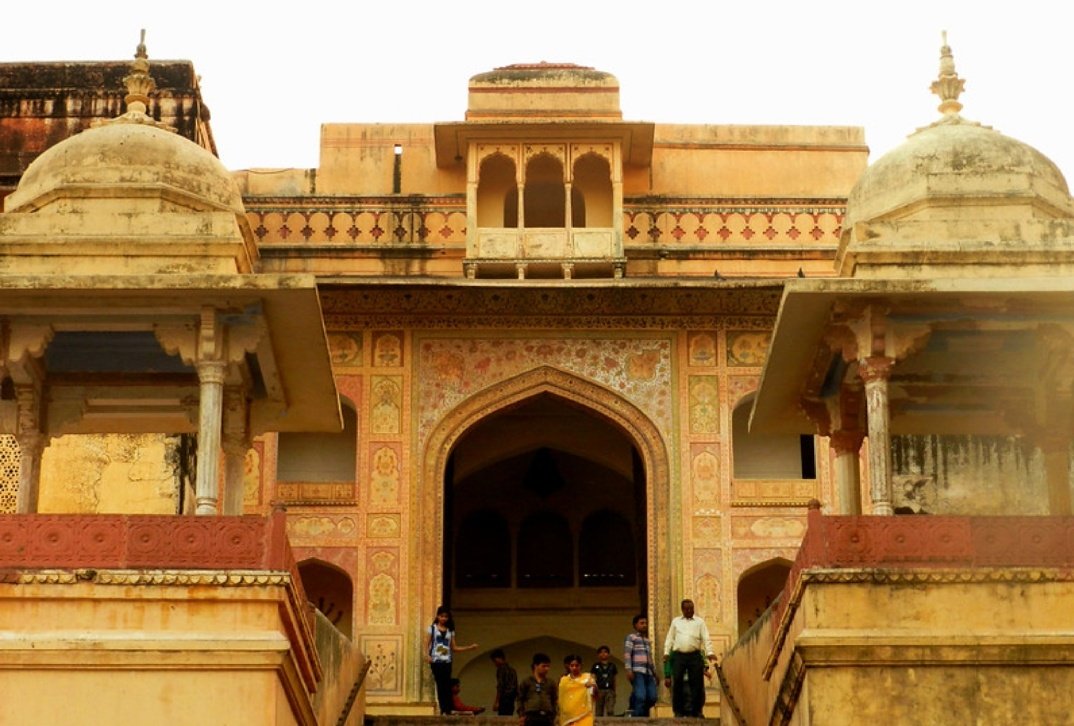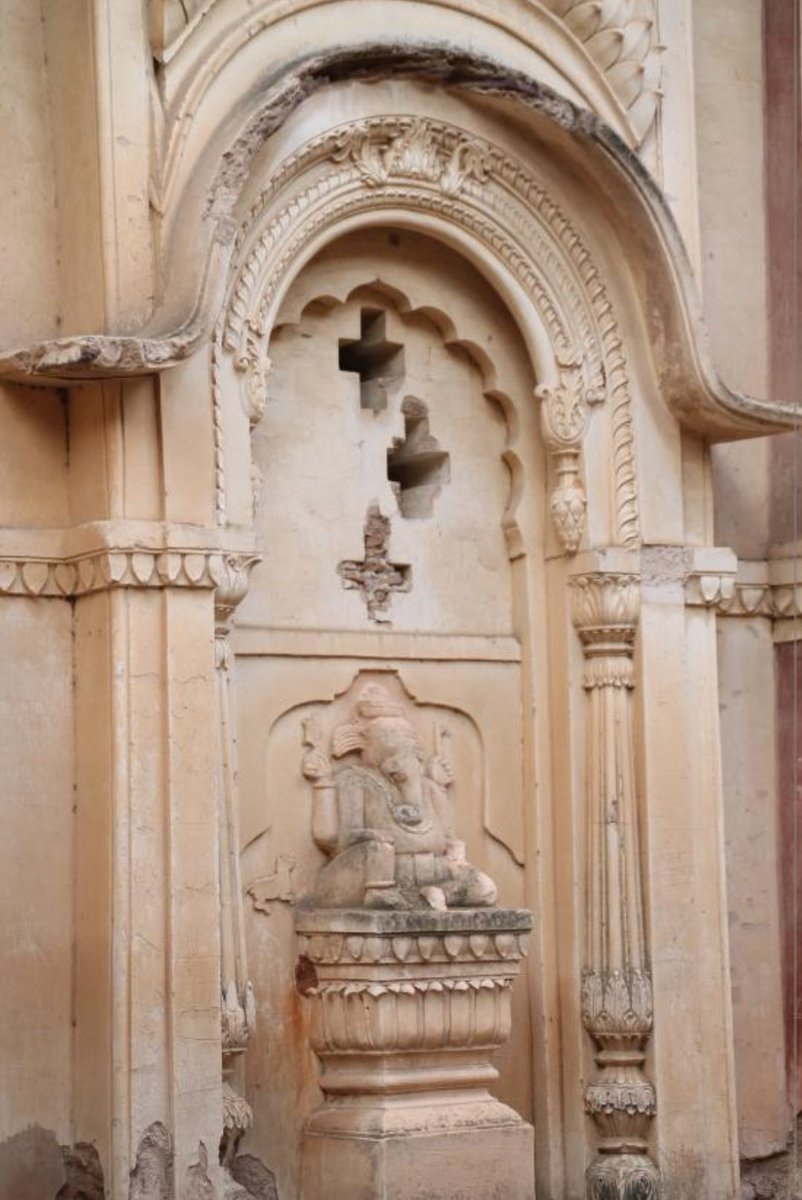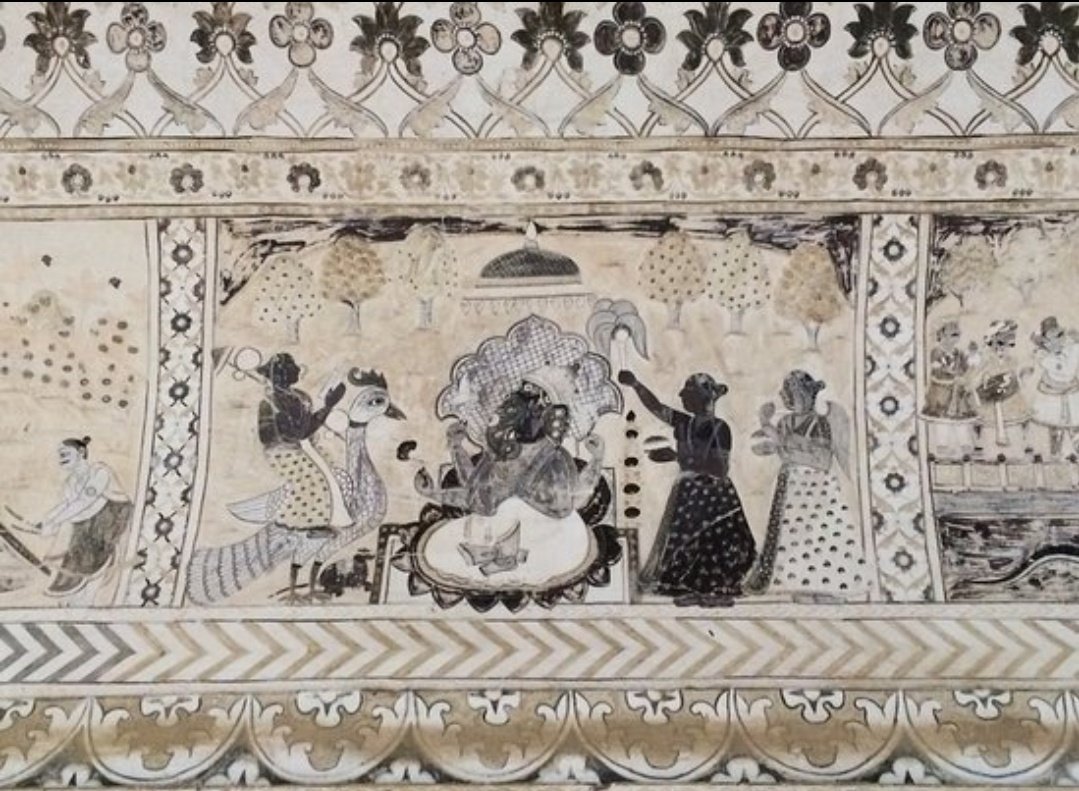#HoysaleswaraTemple is a 12th-century temple dedicated to #LordShiva, located in Halebidu, Karnataka. It was built on banks of a large man-made lake & sponsored by King Vishnuvardhana of Hoysala Empire. Its construction started around 1121 CE & was complete in 1160 CE.
1/1

1/1
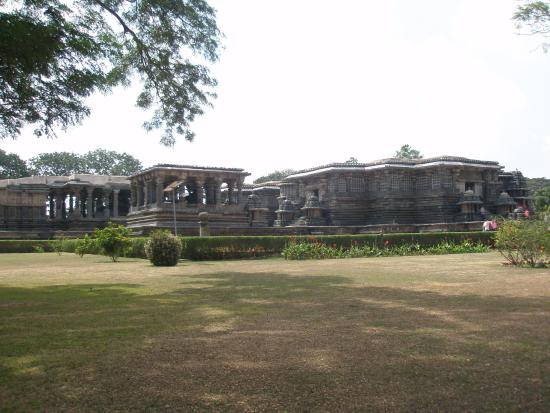

The #HoysaleswaraTemple is a twin-temple dedicated to Hoysaleswara & Santaleswara Shiva lingas, named after masculine & feminine aspects. It has 2 Nandi shrines outside, where each seated Nandi face the respective Shiva linga inside.
2/2
#HistoryEncyclopedia #TemplesOfIndia


2/2
#HistoryEncyclopedia #TemplesOfIndia



Both main temples & Nandi shrines are based on square plan. Temple was carved from soapstone, notable for its sculptures, intricate reliefs, detailed friezes as well its history, iconography.
📷A pillared panel right in front of the temple houses a massive Nandi Maharaj.
3/3
📷A pillared panel right in front of the temple houses a massive Nandi Maharaj.
3/3

📷1: God Shiva and Devi Parvati relief at #HoysaleswaraTemple
#HoysaleswaraTemple is a twin-temple or dvikuta vimana (plan with two shrines & 2 superstructures). The two temples are of the same size, and their sanctums open to the east, facing sunrise.
4/4
#HistoryEncyclopedia
#HoysaleswaraTemple is a twin-temple or dvikuta vimana (plan with two shrines & 2 superstructures). The two temples are of the same size, and their sanctums open to the east, facing sunrise.
4/4
#HistoryEncyclopedia

📷1: Outside on the east side of the main temples are two smaller shrines, each with seated Nandi.
📷2: North Nandi Shrine.
📷3: South Nandi shrine.
5/5
#HistoryEncyclopedia #HoysaleswaraTemple #TemplesOfIndia


📷2: North Nandi Shrine.
📷3: South Nandi shrine.
5/5
#HistoryEncyclopedia #HoysaleswaraTemple #TemplesOfIndia



📷1:To the east of the southern Nandi shrine is a smaller attached Surya shrine, where there is a 📷2: 7 feet (2.1 m) tall Lord Surya statue facing the Nandi and the sanctum.
6/6
#HistoryEncyclopedia #TemplesOfIndia #HoysaleswaraTemple

6/6
#HistoryEncyclopedia #TemplesOfIndia #HoysaleswaraTemple


#HoysaleswaraTemple 7/7
Artwork on the outer walls of the temple are in bands. 1: marching playful elephants; 2: lions; 3: thin miniature scroll; 4: horsemen in different postures; 5: thin miniature scroll; 6: friezes narrating legends from the Hindu texts; 7: makaras..

Artwork on the outer walls of the temple are in bands. 1: marching playful elephants; 2: lions; 3: thin miniature scroll; 4: horsemen in different postures; 5: thin miniature scroll; 6: friezes narrating legends from the Hindu texts; 7: makaras..


8: hamsa & peacocks; 9: professionals, daily life of people alternately standing & sitting; 10: mythical creatures, festivals, ceremonies; 11: artha, kama, dharma scenes including courtship & mithuna, various occupations, some mythical scenes;
8/8 #HoysaleswaraTemple #History
8/8 #HoysaleswaraTemple #History
12th band on the outer wall have large image panels (deities, spiritual stories from Hindu texts) intricately carved. The outer walls of the #HoysaleswaraTemple shrines feature 340 large reliefs.
9/9
#HistoryEncyclopedia #TemplesOfIndia #History
9/9
#HistoryEncyclopedia #TemplesOfIndia #History
📷1: On south-west outer wall of southern Shiva temple, there's beautiful sculptural relief of Devi Durga as Mahishasuramardini killing buffalo demon.
📷2: Life-size sculpture of
Harihara (left half Shiva, right Vishnu) on outer wall of west side at #HoysaleswaraTemple
10/10

📷2: Life-size sculpture of
Harihara (left half Shiva, right Vishnu) on outer wall of west side at #HoysaleswaraTemple
10/10


The #HoysaleswaraTemple has 4 entrances. There is 1 entry on south side. 6 feet high dvarapalas wearing jewelry on both sides of doorway. Each has 4 hands (two broken, others damaged), wear jatamakuta, have third eye and fangs, and stand in S-shaped tribhanga pose~FACEBOOK
11/11


11/11



📷1+2: There are two entries on the east side, facing two large detached open pavilions whose ceiling is supported by lathe turned pillars.
📷3: Outside the southern doorway, in the park, there's large sculpture, of #LordGanesha.
12/12
#HoysaleswaraTemple #TempleOfIndia


📷3: Outside the southern doorway, in the park, there's large sculpture, of #LordGanesha.
12/12
#HoysaleswaraTemple #TempleOfIndia



The four pillars in front of each shrine are the most ornate and the only ones that have the madanika (
salabhanjika) sculptures in their pillar brackets.
📷Pillar and ceiling carvings with a damaged madanakai.
13/13
#HistoryEncyclopedia #HoysaleswaraTemple #History
salabhanjika) sculptures in their pillar brackets.
📷Pillar and ceiling carvings with a damaged madanakai.
13/13
#HistoryEncyclopedia #HoysaleswaraTemple #History

📷1: #Bahubali monolith at ASI museum near the #HoysaleswaraTemple.
📷2: #LordGanesha sculptural carving.
📷3: Garuda Sthamba (Garuda Pillar) to south of the temple. It is also damaged, with its top portion gone.
📷4: Varaha Avtaar of #LordVishnu.
14/14
#HistoryEncyclopedia



📷2: #LordGanesha sculptural carving.
📷3: Garuda Sthamba (Garuda Pillar) to south of the temple. It is also damaged, with its top portion gone.
📷4: Varaha Avtaar of #LordVishnu.
14/14
#HistoryEncyclopedia




📷1:Battle between Rama and Ravana. Notice the array of arrows.
📷2+3:Dwrapalakas in front of Hoysaleshwara shrine – Notice small skulls woven beautifully into sculpture.
📷4:This is the ultimate perfection of sculpture. Notice the salabhanjika robe & wrinkled pattern!
15/15



📷2+3:Dwrapalakas in front of Hoysaleshwara shrine – Notice small skulls woven beautifully into sculpture.
📷4:This is the ultimate perfection of sculpture. Notice the salabhanjika robe & wrinkled pattern!
15/15




📷1: Ravana lifting Mount Kailash. Notice detailed carving of mountain including Lord Shiva & Devi Parvati on top!
📷2: Lord Brahma – Notice neatly carved beard.
📷3: Vamana Avatara (incarnation) of #LordVishnu.
📷4: Drummer – Notice intricate carving of strings of drum
16/16



📷2: Lord Brahma – Notice neatly carved beard.
📷3: Vamana Avatara (incarnation) of #LordVishnu.
📷4: Drummer – Notice intricate carving of strings of drum
16/16




📷1: Garuda Sculpture.
📷2: Natya Saraswati – Also notice the beads in the finger!
📷3: Lord Vishnu in Narasimha Avatara.
📷4: Lord Shiva in Natraja form.
17/17
#HistoryEncyclopedia #HoysaleswaraTemple #TemplesOfIndia



📷2: Natya Saraswati – Also notice the beads in the finger!
📷3: Lord Vishnu in Narasimha Avatara.
📷4: Lord Shiva in Natraja form.
17/17
#HistoryEncyclopedia #HoysaleswaraTemple #TemplesOfIndia




📷1: Life-size sculpture of #LordShiva.
📷2: Lord Krishna playing flute – Muralidhara.
📷3: Shilabalikas under a tree. Can you believe this is carved in stone!!
📷4: Lord Krishna again as Govardhana Giridhari – Lifting Govardhana Mountain to save villagers.
18/18 #History



📷2: Lord Krishna playing flute – Muralidhara.
📷3: Shilabalikas under a tree. Can you believe this is carved in stone!!
📷4: Lord Krishna again as Govardhana Giridhari – Lifting Govardhana Mountain to save villagers.
18/18 #History




📷1: Lord Brahma & Devi Saraswati Sculpture.
📷2: Chakravyuh from #Mahabharata .
📷3: Life-size sculpture of Arjuna.
📷4: Laxmi-Narayana sculptural carving.
19/19
#HistoryEncyclopedia #HoysaleswaraTemple #TemplesOfIndia #temples



📷2: Chakravyuh from #Mahabharata .
📷3: Life-size sculpture of Arjuna.
📷4: Laxmi-Narayana sculptural carving.
19/19
#HistoryEncyclopedia #HoysaleswaraTemple #TemplesOfIndia #temples




• • •
Missing some Tweet in this thread? You can try to
force a refresh



